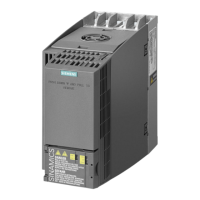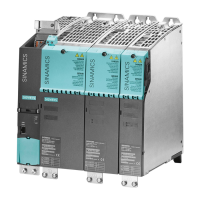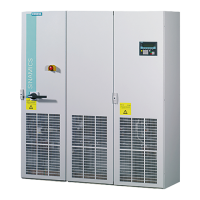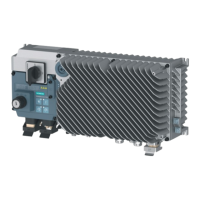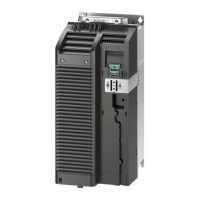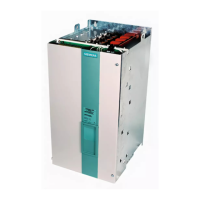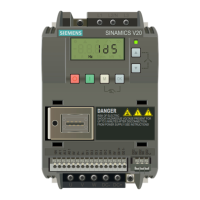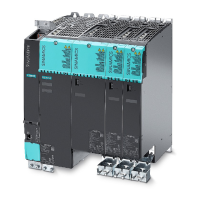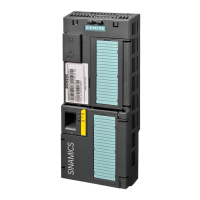Fundamental Principles and System Description
Engineering Information
SINAMICS Engineering Manual – November 2015
Ó Siemens AG
106/528
As the magnitude of the DC link voltage can be parameterized and the DC link current depends on this parameter
setting, the DC current is not suitable as a criterion for dimensioning the Active Infeed required. For this reason, the
power balance of the drive should always be used as a basis for dimensioning the Active Infeed.
The first important quantity to know is the mechanical power P
mech
to be produced on the motor shaft. Starting with
this shaft power value, it is possible to work out the electrical active power P
Line
to be drawn from the supply system
by adding the power losses of the motor P
L Mot
, the power losses of the Motor Module P
L MoMo
and the power losses
of the Active Infeed P
L AI
to the mechanical power value P
mech
.
P
Line
= P
mech
+ P
L Mot
+ P
L MoMo
+ P
L AI
.
It is also possible to use the efficiency factors of the motor (η
Mot
), Motor Module (η
MoMo
) and Active Infeed (η
AI
)
instead of the power losses values
P
Line
= P
mech
/ (η
Mot
• η
MoMo
• η
AI
) .
The active power to be drawn from the supply system depends on the line voltage V
Line
, the line current I
Line
and the
line-side power factor cosφ
Line
as defined by the relation
P
Line
= √3 • V
Line
• I
Line
• cosφ
Line
.
This is used to calculate the required line current I
Line
of the Active Infeed as follows:
I
Line
= P
Line
/ (√3 • V
Line
• cosφ
Line
) .
If the Active Infeed is operated according to the factory setting, i.e. with a line-side power factor of cosφ
Line
= 1, so it
draws only pure active power from the supply. Then the formula can be simplified to
I
Line
= P
Line
/ (√3 • V
Line
) .
The Active Infeed must now be selected such that the permissible line current of the Active Infeed is higher or equal
to the required value I
Line
.
At operation with a line-side power factor cosφ
Line
= 1, the resultant line current is generally lower than the motor
current. This is due to the fact that the motor has a typical power factor cosφ
Mot
≤ 0.9 and therefore requires a
relatively high reactive current. However, this is drawn from the DC link capacitors rather than from the supply
system, resulting in a line current that is lower than the motor current.
Due to the fact that the Active Infeed operates as a step-up converter, it maintains the DC link voltage at a constant
level, even at significant line voltage variations and line voltage dips. If the drive must tolerate supply voltage dips of
more that 15 % without tripping, the following points must be noted:
· The internal auxiliary supply must be fed by a secure, external supply with 230 V (e.g. by means of an
uninterruptible power supply UPS).
· The line-side undervoltage trip level must be parameterized to a correspondingly low value.
· The Active Infeed must be capable of providing current reserves so that it can increase the current to
compensate for the decreasing power in rectifier / regenerative mode resulting from the low voltage level
during the line voltage dip.
More detailed information can be found in the section “Supply systems and supply system types” in the subsection
“Behaviour of SINAMICS converters during supply voltage variations and dips”.
With S150 converters and S120 Active Infeeds, the connected DC link is precharged by means of resistors in the
Active Interface Modules, which creates losses. To precharge the DC link, the Active Interface Module and the
associated Active Line Module are connected to the supply system on the line side via a precharging contactor and
precharging resistors. Once precharging is complete, the bypass contactor is closed and the precharging contactor is
opened again shortly afterwards. Due to the short overlaping time between the precharging contactor and the bypass
contactor (required due to the structure of the Clean Power Filter), precharging and main circuit must have the same
phase sequence, otherwise the precharging resistors may be overloaded and destroyed.

